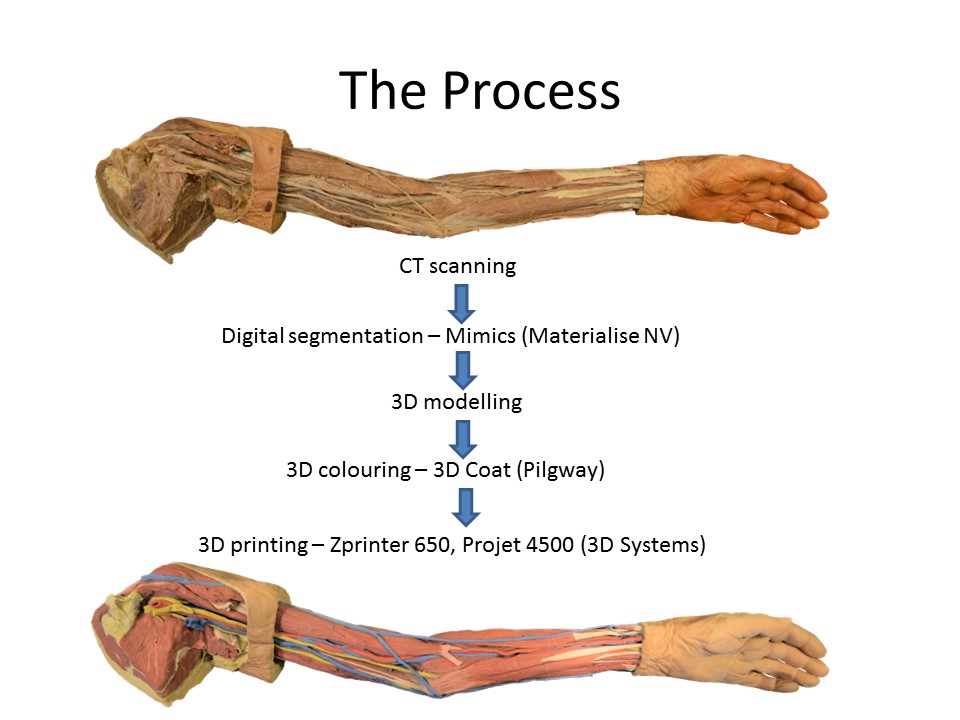
| Theme: 5BB Team Based Learning/Learning anatomy | |||
 |
||||||
| Anatomy and additive manufacturing: Imaging methods and 3D printing for anatomy education |
 |
|||||
|
||||||
- A range of modalities are available for teaching and learning human anatomy.
- These include cadaveric dissection, prosected specimens, plastinates, anatomical models, textbooks, atlases and digital media.
- Each of these modalities has advantages and disadvantages and varying costs.
- We have developed a new modality for teaching and learning human anatomy - 3D printing (additive manufacturing) of prosected specimens and other specimens.
- Our approach produces anatomically accurate, high resolution, full-colour reproductions of 3D datasets obtained from prosections and living subjects

This approach of creating multiple reproducible anatomical replicas or 3D prints offers several advantages over other techniques including:
(1) the production of multiple identical copies
(2) the ability to manipulate size and scale
(3) false colouring to enhance structural visibility
(4) the ability to capture anatomy too complex for traditional physical molding and casting methods
Requires between 20 and 45 person-hours to produce each model (not including printing).
We have completed "Series 1: Normal Human Anatomy" which consists of 55 3D prints. These specimens are available through Erler Zimmer (Booth C16).
Results from a pilot study suggest 3D prints may confer benefits to anatomy learning over cadaveric materials (Dr Stephen Goldie, Tuesday 4pm, Session 9D, Hall 1).
- 3D printing of human anatomy represents a significant advance in anatomy education.
- 3D printing avoids some of the financial, cultural and ethical issues associated with cadaveric specimens.

3D printing can be used to produce anatomically accurate full-colour reproductions of human anatomy and represents a major advance in anatomical education.
- McMenamin PG, Quayle MR, McHenry CR, Adams JW. (2014) The production of anatomical teaching resources using three-dimensional (3D) printing technology. Anat Sci Educ. 7:479-86 Altmetric score 1: 172 for this journal.
- Adams, JW., Paxton, L. Dawes , K., Burlak , K. Quayle, M. McMenamin, PG. (in press) 3D printed reproductions of orbital dissections: a novel mode of visualizing anatomy for trainees in ophthalmology or optometry (Brit J Ophthalmol).
- http://www.aljazeera.com/news/2015/07/3d-printing-revolutionise-medical-training-150721125757681.html
Funds for this work were provided by Monash University.

 Send Email
Send Email